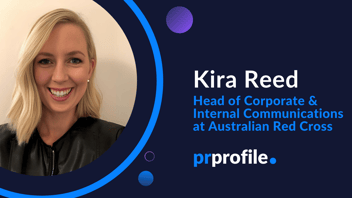Reimagining PR impact: Moving beyond ROI to uncover true value in communication
In the past ten years, we have seen major shifts in the way society communicates. Even in the digital media landscape alone, newspapers have been almost cannibalised, independent news has died and returned multiple times, digital media is central and… checks notes newsletters are making a comeback.
So in this age of rapid change and major technological disruptions, it is time to rethink our metrics.
ROI - the Old Guard of the PR industry
ROI or Return on Investment is one of the most used measures to assess the profitability of an investment. It calculates the dollar value that is generated by each dollar invested.
In the media and communications industry, this refers to the costs tied to your communications strategy and the value created or lost through proactive activity. Many of us still rely on long-standing ROI metrics such as audience impressions, Advertising Value Equivalency, clickthrough rates and bounce rates. These are often used to show that media inputs generated measurable monetary value. They create a clear outcome-driven frame that supports strategic choices and budget decisions.
But if we only rely on quantitative data to show whether we achieved a return, are we capturing the full value of our work? In a time of disruption and shifting expectations, does this traditional view of ROI still align with core organisational objectives? Have we become too narrow?
Look at some Australian ASX-listed companies that delivered record profits in recent quarters. Shareholders received strong dividends. Boards were pleased. Yet this did not always reflect broader organisational performance.
Qantas is the clearest example. The airline came out of a global pandemic that devastated aviation. It scaled back operations, cut jobs and then recorded a surge in customer complaints. At the same time, it posted one of the strongest profit periods in its history. On paper, Qantas delivered a return.
But soon after, the company entered a deep reputational crisis. The outgoing CEO was described as Australia’s most disliked corporate figure by Crikey. The incoming CEO issued public apologies on national television. Customers, staff and the wider public demanded answers. The share price dropped. The company shifted into damage control and now faces the long and costly process of rebuilding reputation, trust and loyalty. These outcomes do not fit neatly into a profit-based definition of return.
Why we need a new way forward
Qantas is a clear case of where broader success factors could have made a difference. Metrics beyond profit and cost may have flagged risk much earlier.
Today, organisations place more weight on brand awareness, customer engagement, market perception and long-term reputation as indicators of value. When an organisation succeeds on these fronts, financial performance usually follows. When it fails, as we saw with Qantas, the financial impact can be severe.
Of course, there are costs tied to awareness, media buying and digital marketing. But PR and strategic communications now involve far more than paid placements. They include relationship building, social media and influencer engagement, brand preference, recognition and loyalty.
To understand the impact of these activities, the frame needs to expand beyond cost and profit.
Moving beyond profit to look at those objectives that lie at the heart of the organisation.
Return on Objectives or ROO is a growing metric used to measure the performance of PR activity aligned to non-financial goals. It is a useful frame for assessing brand awareness, reputation, trust and community engagement. These outcomes are important to organisational success, yet they are difficult to capture through a cost-versus-profit ratio.
It is a less clear space, but so is long-term reputation.
ROO frameworks require a wide-lens view of the environment an organisation operates in, before narrowing in to measure activity within that context. They draw on broader metrics and data points to give a more complete view of impact.
Here are some of the ways communications teams are doing this.
Qualitative analysis of your media performance
Clip counts, impressions and AVE only tell part of the story. They show volume, not value. To measure whether paid, earned and owned media activity aligns with organisational goals, we need to assess the quality of coverage. Sentiment analysis, evidence of proactive engagement and tracking of key messages show whether a media strategy is achieving its aims.
Tear down silos and integrate data
Why look at one data point in isolation? ROI focuses on money, but money alone gives little context. ROO allows a wider mix of insights.
More organisations now have access to rich data. This includes media, social media, digital analytics, survey findings and stakeholder feedback. When you bring these data points together, you see what is driving outcomes and where risks or opportunities sit.
This integrated view gives a clearer picture of public sentiment, awareness and behaviour. Social media shows fast feedback. Digital trends highlight shifts in information seeking. Survey data reflects public opinion and brand recognition. These outcomes matter. As PR professionals, we should use the full value of these insights.
Stakeholder and customer feedback
The Qantas case shows how ignoring stakeholders leads to poor outcomes. This includes customers, staff, industry partners and the broader community.
Before the share price fell, concerns about the airline’s treatment of customers and staff were widespread across media, social channels and everyday conversation. Analysts acknowledged the reputational damage and warned it would likely affect profits.
Internal sentiment data reflected these warnings long before the crisis. Under a ROO framework, stakeholder sentiment would have been tracked as a core objective. Early action may have reduced the scale of risk.
Some of us have been talking about ROO for years, but in the world of public relations, it’s arguably still an emerging concept. The range of metrics, performance indicators and success factors that can be incorporated into these frameworks is immense, and we need to move away from a narrow view that only centres on profit and loss to truly demonstrate the value of our activities.
FAQs
What is ROI in public relations?
ROI, or Return on Investment, measures the monetary return of PR activities. It calculates the value generated per dollar spent on communications campaigns.
Why is ROI not enough to measure PR impact?
ROI focuses only on financial outcomes. It does not capture long-term factors like brand awareness, reputation, customer loyalty, or stakeholder engagement.
What is ROO in PR measurement?
ROO, or Return on Objectives, evaluates PR success beyond profit. It tracks brand recognition, media quality, stakeholder sentiment, and engagement outcomes.
How can Australian companies implement ROO frameworks?
Companies can integrate media analytics, social media insights, surveys, stakeholder feedback, and qualitative coverage analysis to assess PR impact.
How does ROO help manage reputational risk?
By tracking stakeholder and public sentiment over time, ROO highlights potential reputational risks early, allowing organisations to act before financial impacts occur.
REAL Impact Score: The credible way to measure the impact of your media coverage

Developed in collaboration with data-science global leader and partner Identrics, the REAL Impact Score is a response to the lack of accurate and credible ways to measure the impact of media coverage, such as Advertising Value Equivalents (AVEs) and outdated Reach figures.
REAL (R = Reach, E = Engagement, A & L = Authority & Leverage) Impact Score is backed by science and aims to shift PR measurement from vanity figures to proven value.
From volume to value
The REAL Impact Score measures the influence of a single media mention by analysing three core pillars: the outlet, article, and author. Each element reflects a different part of media value:
- Outlet (Reach): The size and viewership of the publication or platform, updated dynamically.
- Article (Engagement): The number of social engagements with the article.
- Author (Authority & Leverage): The prominence and influence of the journalist or commentator.
Together, these inputs create a dynamic score that goes beyond simple clip counts or circulation figures. The higher the score, the greater the impact of that mention.
Why does it matter?
Proving the value and impact of earned media has always been a challenge in PR. Now, you can easily sift through the noise to quickly identify your most impactful mentions and report to your stakeholders on the value of your comms efforts.




